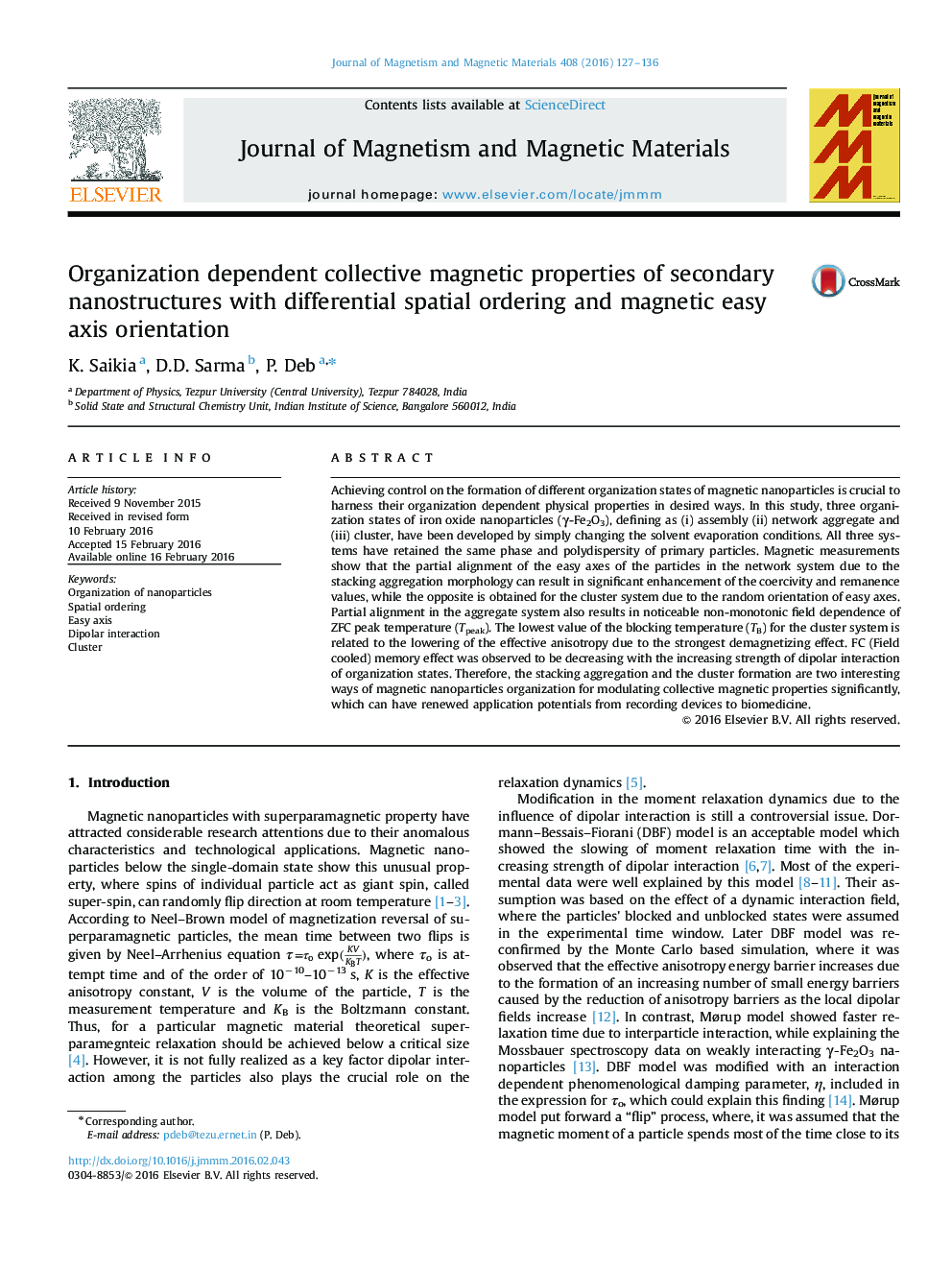| Article ID | Journal | Published Year | Pages | File Type |
|---|---|---|---|---|
| 1798222 | Journal of Magnetism and Magnetic Materials | 2016 | 10 Pages |
•Three organization states of magnetic nanoparticles were developed.•Aggregation enhances the Hc and Mr/Ms, while spherical clustering shows opposite.•Organization morphology hardly effects on FC memory effect.•Developed secondary systems can have renewed application potentials in wide spectrum.
Achieving control on the formation of different organization states of magnetic nanoparticles is crucial to harness their organization dependent physical properties in desired ways. In this study, three organization states of iron oxide nanoparticles (γ-Fe2O3), defining as (i) assembly (ii) network aggregate and (iii) cluster, have been developed by simply changing the solvent evaporation conditions. All three systems have retained the same phase and polydispersity of primary particles. Magnetic measurements show that the partial alignment of the easy axes of the particles in the network system due to the stacking aggregation morphology can result in significant enhancement of the coercivity and remanence values, while the opposite is obtained for the cluster system due to the random orientation of easy axes. Partial alignment in the aggregate system also results in noticeable non-monotonic field dependence of ZFC peak temperature (Tpeak). The lowest value of the blocking temperature (TB) for the cluster system is related to the lowering of the effective anisotropy due to the strongest demagnetizing effect. FC (Field cooled) memory effect was observed to be decreasing with the increasing strength of dipolar interaction of organization states. Therefore, the stacking aggregation and the cluster formation are two interesting ways of magnetic nanoparticles organization for modulating collective magnetic properties significantly, which can have renewed application potentials from recording devices to biomedicine.
